







3. Lets Rootle
4. Upcoming Events & Replays
5. Regenerative Vs Sustainable Farming for Pigs
8. Big Fat Pig Quiz 2024 Results
9. Breeding Focus -The Gene Pool
13. Pork-Tastic
16. MEATing our OSB Pork Producers
19. OSBPG Farrowing Update
24. Competition
26. Farming through the eyes of children
28. Genetic SpreadAllowance
30. Vet Chat - Farrowing Facts
32. OSB Pork Recipe



Well since our last spring issue of the magazine, the weather has been a mixture to say the least. Spring 2024, was recorded to being the warmest on record according to the met office, but June saw many of us finding ourselves lighting the fire as temperatures dropped below average. Looking at our Facebook page many of us have been worrying more about finding dry paddocks for our pigs rather than filling up wallows. Hopefully as the summer continues we remain mindful of preparing for heatwaves, ensuring our pigs all have access to shade, fresh cool drinking water and wallows.
As we can look forward to watching our pigs relaxing in their mud pack spa treatment wallows, they also look forward to watching us over the fence preparing their paddocks for the next season.Yes as the soils have warmed up now is the perfect time to sow the pig rooting mix to make the plain paddocks flourish again. We are pleased to be able to say that we have been able to agree a fabulous deal with Cotswold seeds this year, so if you are still to sow your paddocks and looking for some pig rooting mix seeds, why not contact Lisa at hello@oxfordsandyblackpiggroup.org to find out more. However let’s try to remember to make some time to enjoy ourselves this summer too.
Agricultural shows are a quintessential part of summer countryside life. Whether they are small local shows or large county shows, they are a perfect opportunity for us to celebrate all the wonderful aspects of rural life, including our crafts, machinery, fresh produce and livestock. However whilst we are all enjoying tottering from stand to stand at the shows, looking at all the exhibits have to offer, please can we all remain mindful of biosecurity to keep all show livestock and our precious livestock at home safe.To help keep your livestock safe at home you can also visit our OSBPG shop online and order your free Bio-Security Foot Dip Sign.
Also, it is hard to look forward to the British summer, without the optimistic excitement of bbq’s and picnics.These are perfect opportunities for us all to relax and celebrate some of our fabulous Oxford Sandy and Black produce, we have worked so hard for. I’m delighted to see this year has seen some fabulous OSBPG cook-alongs that celebrate our Oxford Sandy and Black produce. If anyone is looking for any inspiration for their picnics this summer, how about heading to ourYouTube page and catch some picnic inspiring cook-alongs, such as Katie Copper’s OSB scotch eggs cooked in theAir fryer or Kim Brook’s BakKwa, an OSB pork Jerky recipe that is perfect for picnics and snacking.
Whatever it is that you are doing to celebrate this year’s British Summer; we can’t wait for you to share it with us on our Facebook Oxford Sandy and Black Pig Foundation Charity and OSB Rare Breed Pork pages.
Natalie Revett (Trustee)

In the first installment of our "This Little Piggy GoesTo.." series, we feature Nicola (Nicki) Goodings at Green Farm in Norfolk. Nicki provides an insightful tour of her farm and farm shop, showcasing her Red Poll cattle and exceptional OSB pigs.


Join Natalie Revett (OSBPGTrustee) , as she guides you through the steps to create a show-stopping meal: Rolled OSB Pork Belly stuffed with spicy Nduja, paired with a rich and creamy Oven-Baked Mushroom Risotto.


Join Natalie Revett,Trustee of OSBPG, as she interviewsAndrew O'Shea, Chairman of OSBPG. Discover howAndrew's journey from an allotment 200 miles south evolved into becoming a smallholder, and hear about his introduction to OSB pigs and involvement with the charity

TimeMachine:
LookingBack

We’re going back to September 2019 to listen to our very first Podcast - History of the OSB



●
Habitat Management:
Ensuring pigs have sufficient space and proper living conditions to reduce stress and disease.

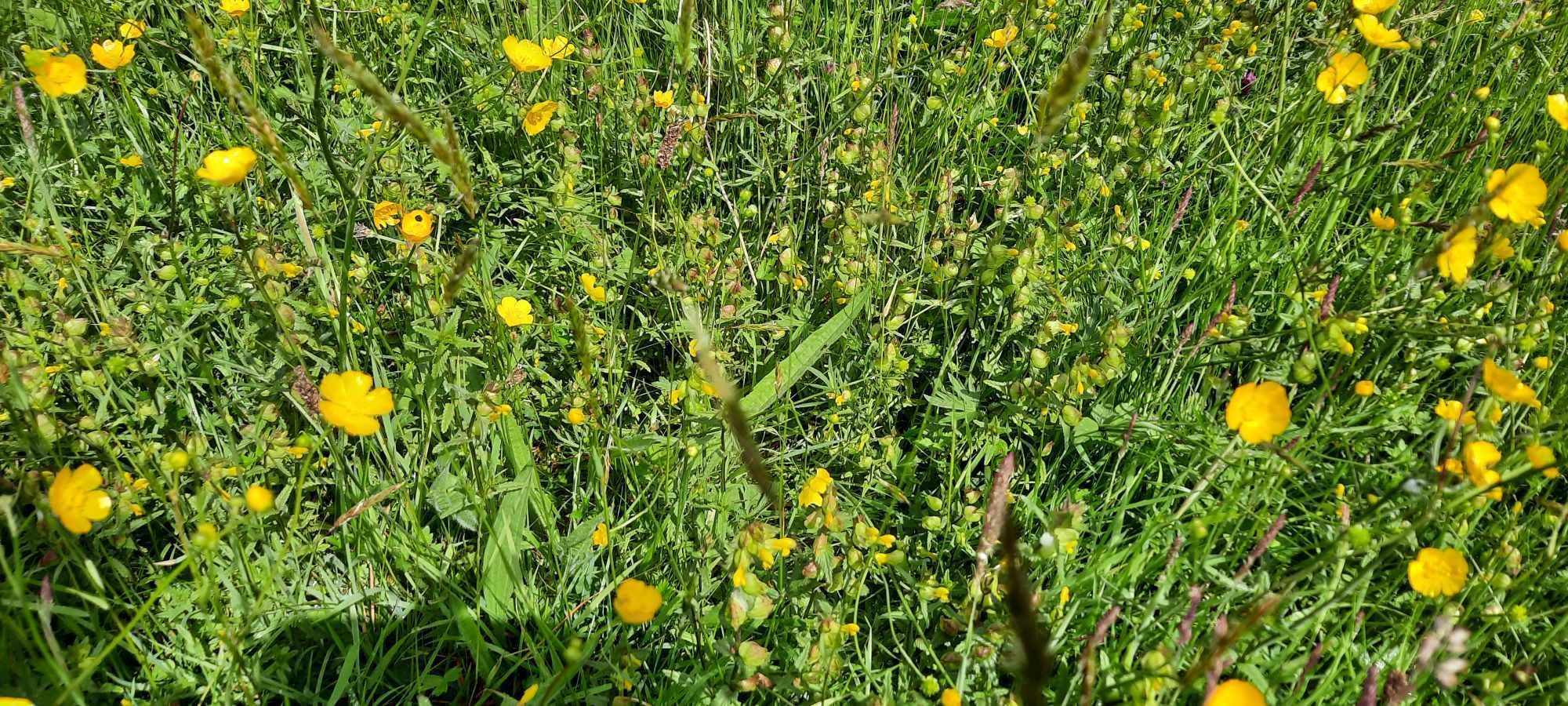
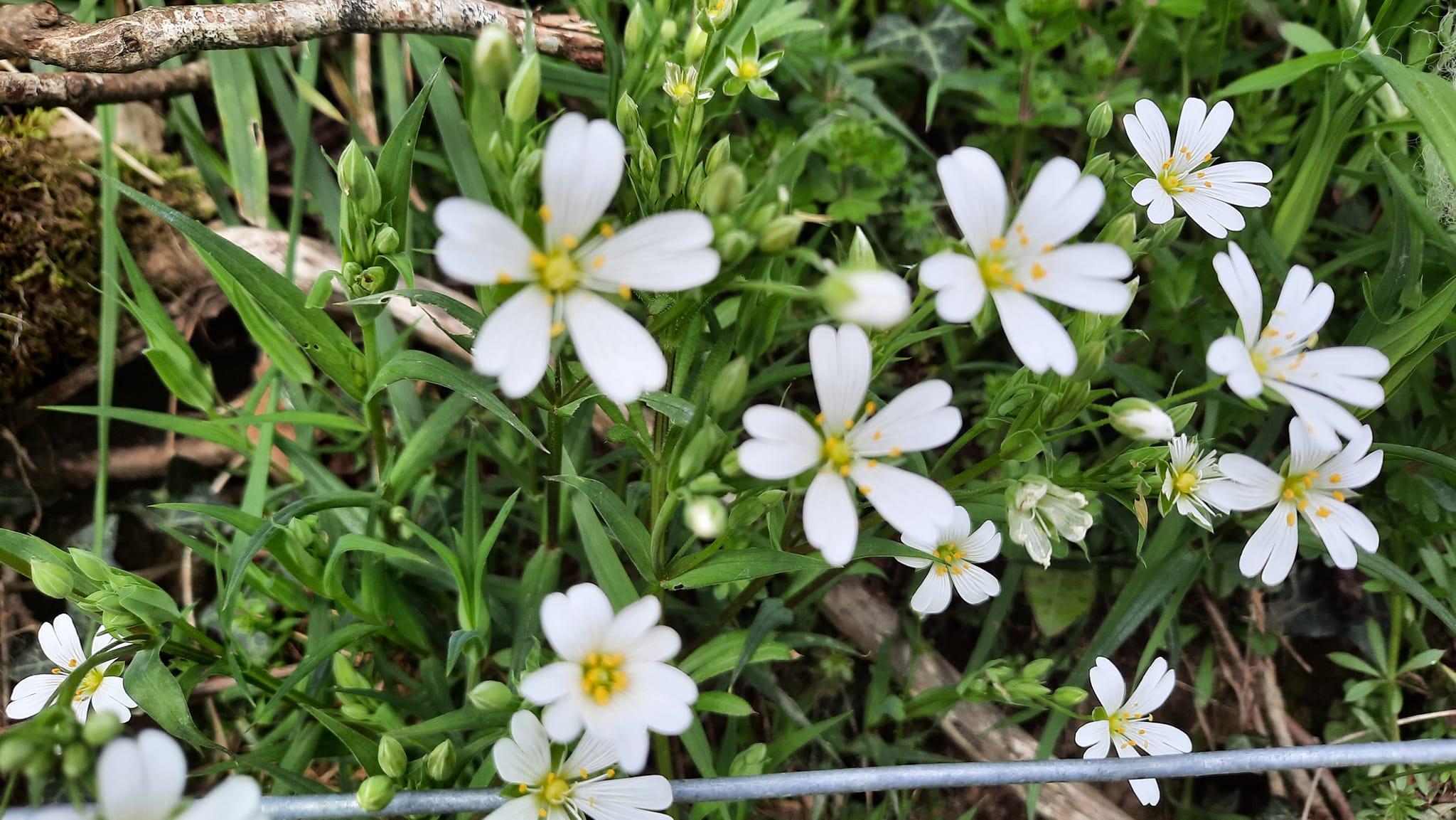

Choosing the right approach for your pig keeping operation depends on several factors, including your goals, resources, and geographical conditions. Here are some considerations:
1. EvaluateYour Resources:Assess what resources you have available, such as land, water, labour and financial investment. Sustainable and regenerative practices can vary in their resource requirements.
2. Set Clear Goals: Define what you want to achieve with your pig keeping operation.Are you focused on environmental impact, pig health, product quality, or economic viability? Clear goals will guide your decisions.
3. Start Small and Scale Up: Implement new practices on a small scale first to see how they work in your specific context. Gradually expand successful practices learning as you go and adding to your experiences
4. Seek Knowledge and Support: Learn from others, ask questions openly on the OSBPG Charity, attend workshops and connect with agricultural services or local farming groups. Shared knowledge and experiences can be invaluable.
5. Monitor andAdapt: Continuously monitor the health of your pigs, the condition of your land and the success of your practices. Be ready to adapt based on what you learn.
● Free-Range Outdoor Rearing:Allowing pigs to roam outdoors can improve their welfare, reduce stress, and enhance meat quality. However, it requires adequate land and effective management to prevent overgrazing and soil degradation.
● Soya-Free Diets: Reducing or eliminating soya from pig diets can reduce the environmental impact associated with soya production, such as deforestation.
● Organic Farming: Following organic farming standards can improve soil health, reduce chemical use, and often result in higher product value. However, it can also require more labour and resources.
Ensuring the health of your pigs while implementing sustainable or regenerative practices is crucial. Healthy pigs are less likely to require antibiotics and other interventions, which aligns with both environmental and animal welfare goals. Regular health checks, appropriate nutrition, and good living conditions are essential regardless of the farming approach you choose.
Navigating the complexities of sustainable and regenerative farming for pigs can indeed be challenging. By focusing on clear goals, starting small, continuously learning, and being adaptable, you can find the right balance that works for your farm. Ultimately, the integration of these practices can lead to a more resilient, productive, and environmentally friendly pig keeping operation.
On Friday, 26th July 2024, at 19:00, the much-anticipated Big Fat Pig Quiz took place, bringing together a vibrant community of OSBPG Supporters for a night of trivia, camaraderie, and charitable giving.
The event was graced by an array of attendees, including Victoria & Ian Lamb,, Kerrie & JPChalmers, Linda & Sebastian Hricko,Alison & Davide Sabine, Jonathan Marquis and his team, Robin Mackay, Natalie &Ali Revett, JTTeare, Clemency Shadbolt,Tracy Crabb, Chris & Fi Moss, JenThomson, Chris &Aimie Turner, Matt & Sarah Horne, and Mike & Lucy Carter.
Our sponsors, who generously provided auction prizes, were Sarah & Robert Buttle, Kathryn Green, Cotswold Seeds, Richard Bramble, Folly Farm, Weschenfelder, ASAMetal Products, and Steve Williams.Their contributions were instrumental in the success of the evening.
The quiz was not only a test of knowledge but also a beacon of generosity. Chris & Fi Moss emerged as the winners, securing a £150 prize. In a heartwarming gesture, they donated their winnings back to the charity, exemplifying the spirit of the event.



Aspecial mention goes to our scorer and marker, Kathryn Green, whose diligent efforts ensured the smooth running of the quiz.
Thanks to the collective efforts and enthusiasm of everyone involved, we raised an impressive £872 for our cause.The Big Fat Pig Quiz 2024 was a testament to the power of the OSBPG community and generosity, making it a memorable evening for all.
Thank you everyone
Andrew O’Shea - Chair Oxford Sandy Black Pig Group Foundation Charity
In OSB pig breeding, understanding genetic metrics like the Coefficient of Inbreeding (COI), Kinship, and Mean Kinship is crucial for maintaining genetic diversity and health within a population. Each of these metrics serves a different purpose and offers unique insights into an animal's genetic makeup and its potential impact on the population.
The Coefficient of Inbreeding (COI) measures the likelihood that an individual will inherit two identical copies of a gene from both parents. Essentially, it indicates the probability of an individual being homozygous for a particular gene due to inheritance from a common ancestor. High COI values suggest a higher risk of inbreeding depression, which can lead to health issues and reduced vitality due to the expression of deleterious recessive genes.


Mean Kinship (MK) is a metric that assesses the genetic relatedness of an individual to the entire population. It reflects how commonly an individual's genes are found within the broader gene pool.An animal with a low MK value is genetically less related to the current population and is therefore considered more valuable for maintaining genetic diversity.This metric is particularly useful in breeding programs aimed at preserving endangered species, as it helps identify animals that can introduce rare genetic material into the population.
Acommon misconception in breeding is that the presence of the same boar or sow bloodline multiple times on a pedigree card automatically indicates inbreeding. While repeated appearances of an ancestor can increase COI, it does not necessarily equate to problematic inbreeding. It's important to consider the overall genetic diversity and the specific COI value rather than solely relying on pedigree appearances.
Mean Kinship is a valuable tool developed within the pig community to enhance the genetic diversity of endangered species. It has proven to be highly effective for other animals as well. Unlike COI, which focuses on individual inbreeding risks, MK targets the genetic health of the entire breed. By prioritising animals with low MK values, breeders can help ensure that the breed as a whole remains genetically diverse and healthy.This broader focus on population-level diversity makes MK particularly suitable for managing the genetic health of breeds over multiple generations.

Here's a diagram showing the genetic metric values as percentages.The chart illustrates the relationships between COI, Kinship, and Mean Kinship and their impact on breeding decisions:

COI (Coefficient of Inbreeding): Higher percentages indicate a greater likelihood of inbreeding, leading to potential health issues due to the inheritance of identical genes from both parents.
Kinship: Reflects how common an individual's genes are within the population. Higher percentages show greater genetic commonality.
Mean Kinship (MK): Lower percentages mean the individual is less related to the population, making it genetically valuable for maintaining breed diversity and health.
This visual representation helps clarify the distinct roles of each metric in breeding strategies.
In your breeding plan, COI (Coefficient of Inbreeding) and Kinship values are assigned to individual pigs, while Mean Kinship (MK) is calculated when evaluating the potential of a specific mating (Sire x Dam). Ideally, when planning a breeding, we aim to keep the MK of a given pairing below 5%. When considering potential pig purchases for your herd, it's essential to assume that the MK is less than or equal to 5.0% for a suitable match.The lower the MK, the better the genetic match. For instance, an MK of 1.9% is significantly more favourable than an MK of 3.4%, as it indicates a greater contribution to maintaining genetic diversity within the population.
In conclusion, while COI, Kinship, and Mean Kinship each provide different insights, they are all essential for responsible breeding practices. By understanding and utilising these metrics, breeders can make informed decisions that promote the long-term health and viability of their pig Herds.

OSBPG pigs give the thumbs up on Soya-Free!
The evolving interests of consumers, driven by a desire to understand and support local produce and producers, are a clear indication that our independent pork producers are successfully showcasing the quality of OSB Pork.Today's consumers are increasingly concerned about the origins and sustainability of their food, questioning aspects such as its source, rearing practices, breed, and the growing trend of feed composition fed to our pigs.
In theAutumn edition ofThe Sandy Pig, we shared our collaboration with Harpers Feeds Ltd, in partnership with Massey Feed Group. Harpers Feeds not only emphasises environmental responsibility but also adheres to ISO 14001 standards, actively working to reduce their carbon footprint and promote sustainable farming practices. Last year, they introduced a soya-free feed, which has gained significant success.
The OSBPG Charity is now actively involved with Harper Feeds, proudly announcing the successful deployment of the soya-free feed.An exclusive account has been established at Harper Feeds for our supporters, allowing them to order directly. While this account focuses on pig feed orders, Harpers also offers feeds for poultry, cattle, and goats that supporters are welcome to include in their orders.The soya-free feed, available in 20kg bags or dumpy bags, is available in sow rolls, or 6mm pencils, comes with a minimum order of 1 tonne (50 bags) at the current price of GBP8.20 per bag, with a protein level of 15%.
For more information and to set up an account (without immediate commitment to order), please enquire about this exciting OSBPG Charity initiative Email: hello@oxfordsandyblackpiggroup.org.

This year, if you are holding an event, whether it be a farm open day, a competing event like running, cycling, swimming, dancing, having a stall at a country show, hosting a coffee morning, helping organise a community or school event, enjoying cake with friends, or even participating in a charity fundraiser, you can make a meaningful impact.
Apply for one of our fundraising packs, which are brimming with goodies, inspiration, and support materials to assist you in running a successful event. The aim is to raise awareness of our beautiful Oxford Sandy and Black breed and all the joys they bring, as well as the incredible work accomplished by those hosting the event through breeding and rearing outdoors, resulting in wonderful produce.
To receive your free fundraising pack for your upcoming events, please apply here.
Raising awareness of our remarkable breed and the OSBPG Charity, which is always here to support each and every one of you, is crucial. It goes without saying that we couldn't achieve as much as we have without the unwavering support of individuals like you, our valued supporters.Thank you for your dedication and passion for our cause. Together, we can make a real difference.
To register your wonderful ideas of fun and obtain your free fundraising pack, email: fundraising@osbpg.org
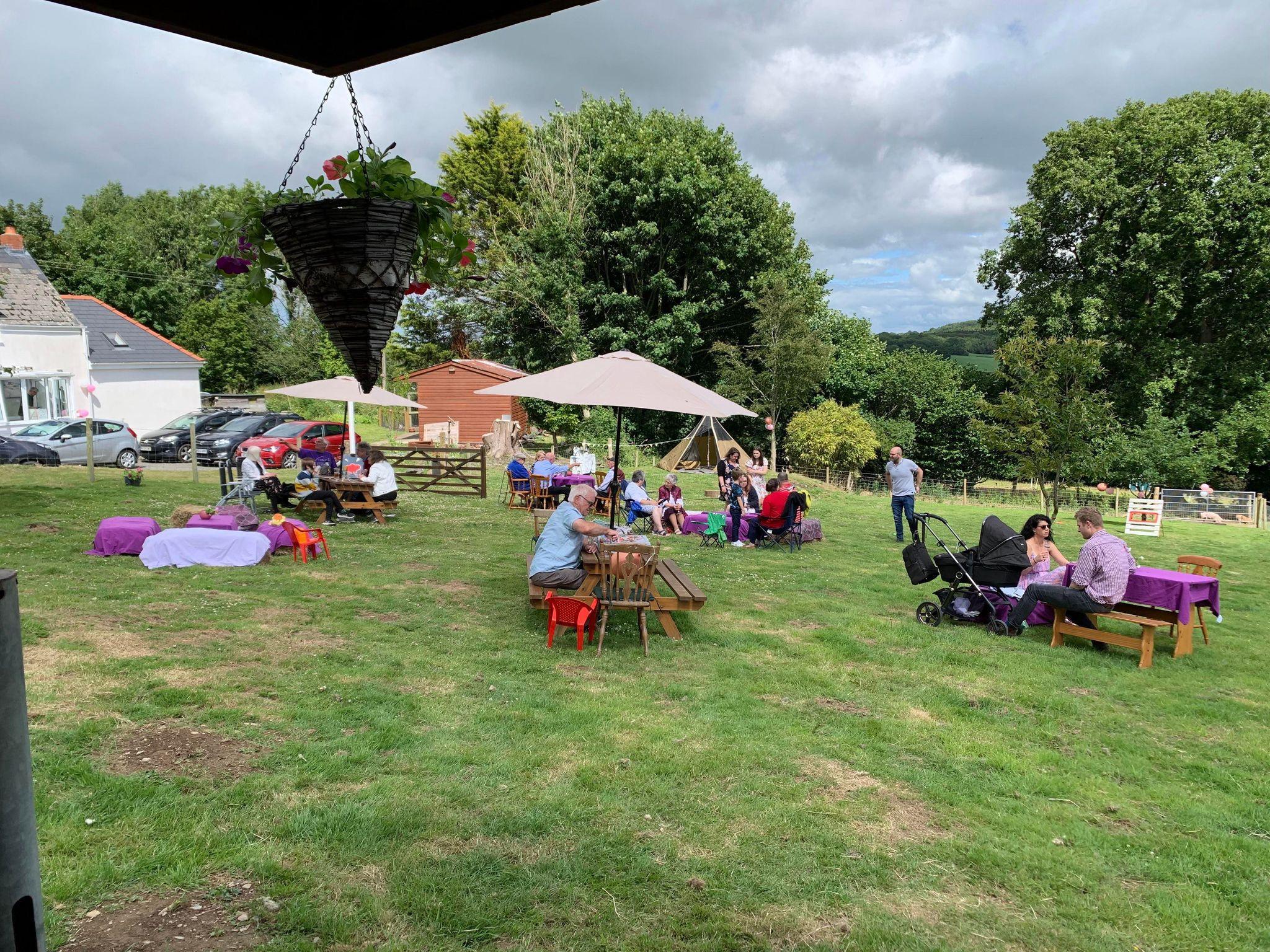



Thanks to the OSBPG Foundation Charity supporters, we have been compiling extensive pork-related data concerning our OSB pigs. In fact, we are the only organisation that gathers such information for a rare or native pig breed. So, what can the data we have tell us? Firstly, we have data from over 500 OSB pigs sent to slaughter betweenAugust 2022 and June 2024.As you can see from the graph above, we have been able to provide average live and dead weights for all of these pigs and break them down by age.An interesting data point to note is that the variance in "Average Carcass Return" (the amount of unbutchered pork you get from a pig), ranges from 78.9% to 81.1%.This means that if you know the live weight of your pig before slaughter, you can typically get a good estimate of the amount of pork you will receive in return.
We have also been able to break down the UK geographic spread of where OSB pork is potentially available to the public, whether directly from the producer, farm shops, pop-up stalls, catering facilities, or farmers' markets.Alarge majority of this pork will carry the charity's free OSB Pork Labels, so you can be assured you are buying pure OSB pork from supporters of the OSBPG Charity. We have graphically represented this geographic spread on the map on the following page; it is staggering to see where OSB pork is produced and available.














This map shows where our OSB Pork producers are and the number of pigs over 2 years that have been sent for Pork, Sausage, Bacon, Charcuterie etc
































Not only have we been collecting weights and locations, but we have also been able to understand how our producers are using their OSB pork in terms of cuts, curing, and sausage making. From the graph below, you can see the popularity and variety of uses for our versatile OSB pork. What is particularly interesting, besides the variety, are the most popular choices from our producers based on personal and customer demand. It is key to note that the top five choices are consistent in their selection, although the order of priority does differ year to year. In this area, roasting joints, chops, sausages, bacon, belly, and offal are all big favourites with OSB pork and are consistently in the "most popular" category.
However, let's also consider the less common choices.There is a steady increase in the use of the head for items like cheeks and brawn, the whole pig for hog roasting, and the delicate art of charcuterie.
This is not a one-time effort; we are always collecting this data and will continue to analyse it to see how things change over time. If you produce OSB pork, we would love to hear from you. Please email us at hello@oxfordsandyblackpiggroup.org and let us know the ages, sex, live and dead weights of your OSBs and how they were used for pork products, whether for personal consumption or public sale. It would also be helpful to know if you do the butchering yourself, and don't forget to tell us where you live.



Sunnyside Smallholding is a traditional, mixed farm where Hazel and I grow our own fruit and vegetables, breed chickens, turkeys, pigs, sheep and keep bees. Our aim is to produce tasty, wholesome, healthy food for our family in an environmentally friendly way and sell the surplus to generate some income.The animals are all traditional rare breeds that would once have been common place on small farms and include Norfolk Black turkeys, Light Sussex hens, Jacob sheep and, of course, Oxford Sandy and Black pigs.All rare breed farm animals tend to be hardy, problem free and well suited to a natural life outdoors but being slower growing than their modern equivalent, they are more expensive to rear.This is why they have become ‘rare’ but it is also the reason why they produce such tasty meat.
We started our smallholding adventure around 15 years ago. I was a reluctant vegetarian due to concerns over animal welfare in large scale commercial farming. Having a smallholding meant I could produce my own meat and eat it with a clear conscience. Due to their ability to consume all the excess produce from the smallholding, pigs were always going to be central to our self-sufficient ambitions. What I didn’t quite expect was just how tasty outdoor reared, rare breed pork was, something that many of us pig keepers take for granted.After experimenting with Gloucester Old Spots,Tamworths and Mangalitzers, I settled on Oxford Sandy and Blacks. Oxford Sandy and Black pigs produce a great carcass, have good sized litters but if I’m honest, I just thought they were the best looking of all the rare breed pigs.This is not as superficial as it sounds as I’m sure their looks help create a healthy demand for weaner sales, an important part of my pig keeping.

Right from the beginning, I wanted to be involved in the butchering and processing of my pork. There is such a bewildering variety of porky products that I felt the only way to properly understand it was to butcher at home. I was lucky to know a very skilled ex-butcher who helped me and shared all his knowledge with me over a few years. No wonder things can seem confusing for beginners, it took that long to feel confident enough to have a go on my own. At the time, the River Cottage ‘Pig in a Day’ video was a valuable resource, then came the informative and entertaining Scott Rea videos on YouTube but now the Oxford Sandy and Black Pig Foundation Charity has their own excellent set of YouTube butchery videos.

In the past, the slaughter and processing of a pig would have been a big annual event on a smallholding. I take my pigs to the local abattoir but I wanted to recreate the sense of occasion associated with turning a couple of pig carcases into lots of exciting pork produce. No other animal gives us such a wide variety of delightful produce but making the most of it does involve a few days work and some capable, willing volunteers.

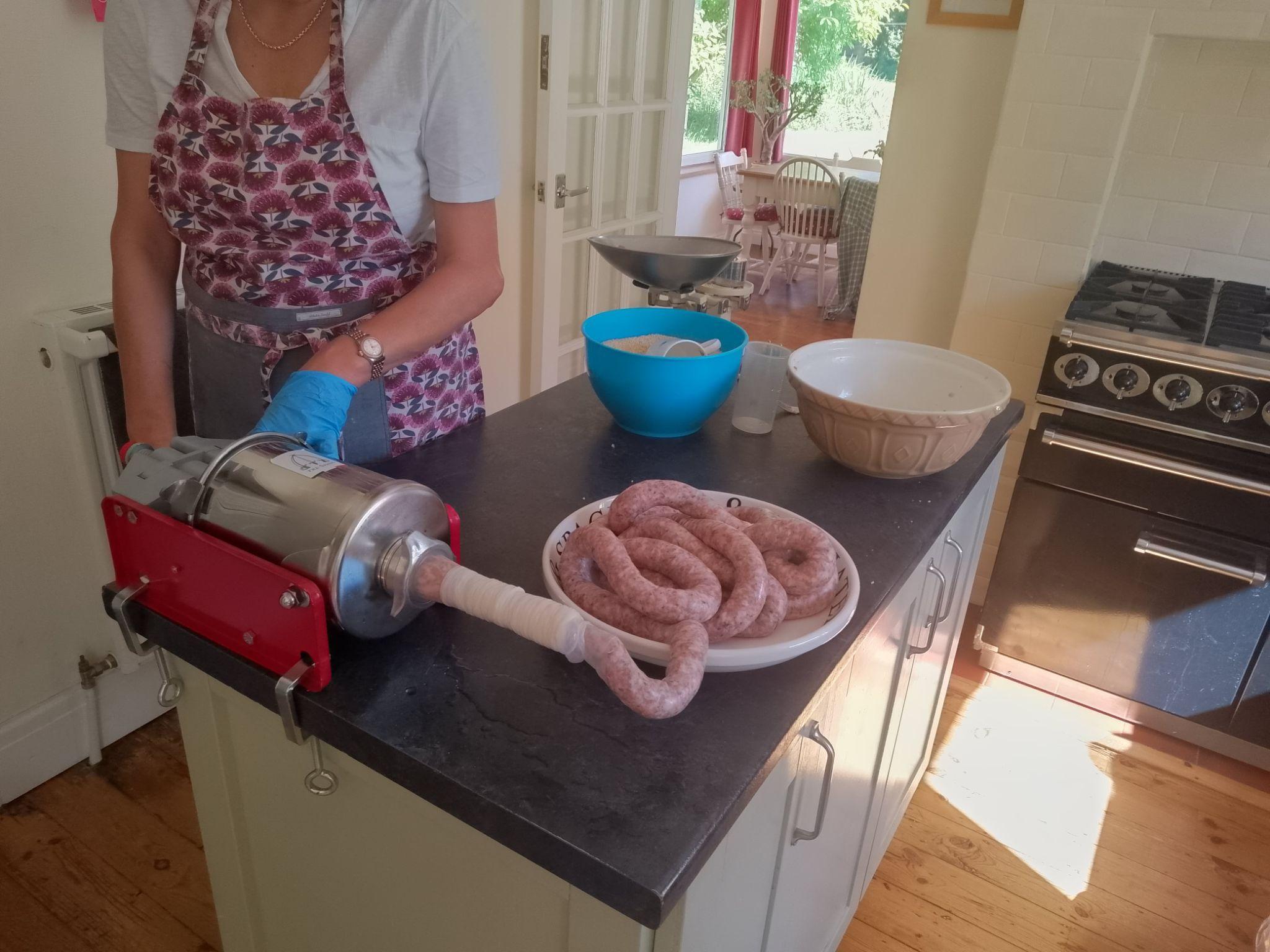

Firstly, the different pork joints are cut from the carcase; leg, shoulder, belly, loin, chops, steaks and diced pork. Some parts of the pig are used to produce minced pork which makes a great ‘pig keeper’s pie’ (just like shepherd’s pie but with pork, why not?). More minced pork is mixed with seasoning to produce Sunnyside Sausages and Herby Burgers.Awhole leg joint will be cured to make gammon and then cooked with a sweet mustard glaze for ham. Parts of the loin and belly will also be dry cured in the traditional way to make a special bacon like our great grandparents used to enjoy. Sometimes I will also make salami, a cured sausage that can be eaten raw. Some liver is eaten fresh but I use most of it to make pate which freezes well. Bones and trotters are roasted and then boiled with herbs to make a rich, tasty, gelatinous stock.The perfect base for many soups.Any excess fat is rendered down to make snowy white lard for roasting potatoes and for the pastry in Hazel’s very special pork pie.The pork pie is the final, stunning porky celebration, using small pieces of prime pork, gammon and minced pork all set in that tasty gelatine stock.This is what I mean about a wide variety of uses.
I once described one of our Sunnyside pork processing weeks in an article in a local magazine.An elderly lady then contacted me and described how reading the article had brought back vivid memories or her rural life as a child. It was fascinating to listen to her talking about a way of life that I had only ever read about.That way of life may be confined to history but the same pork and bacon can still be recreated in our modern world with our rare breed pigs.



The elderly lady came to visit and had some of my traditional, dry cured bacon, rind on and in a block, unsliced. She later contacted me to describe how the special bacon took her back many, many decades and reminded her how bacon used to taste. Complement indeed for our special breed of pig and the old, traditional ways of processing it.
Hazel and I continue to enjoy our healthy way of life, living off the land while promoting our rare breeds and sharing our knowledge and great produce.




We are now well into our fourth full year of collecting farrowing information from our OSBPG breeders.The support from our breeders in gathering this information is amazing, and we are truly grateful for it, as it allows us to continuously review what is evolving in the wonderful world of Oxford Sandy and Black Pigs.The graph below shows the number of farrowings and the Gilt versus Boar birth counts for the data we have from 1 January through 31 May 2024.
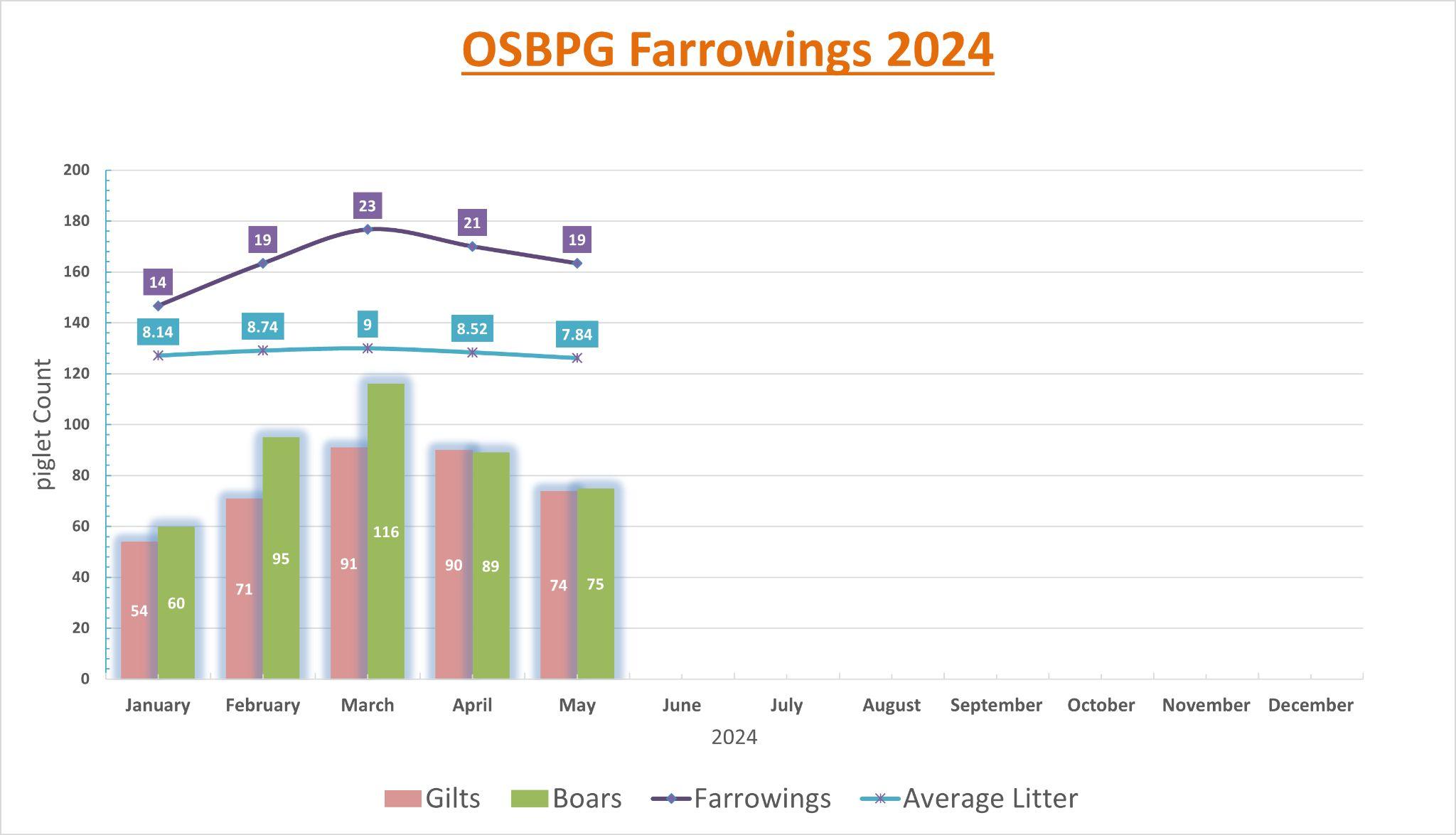
We are pleased to report that we have successfully recorded farrowings from all 13 female bloodlines and have utilised all 4 boar lines as sires.

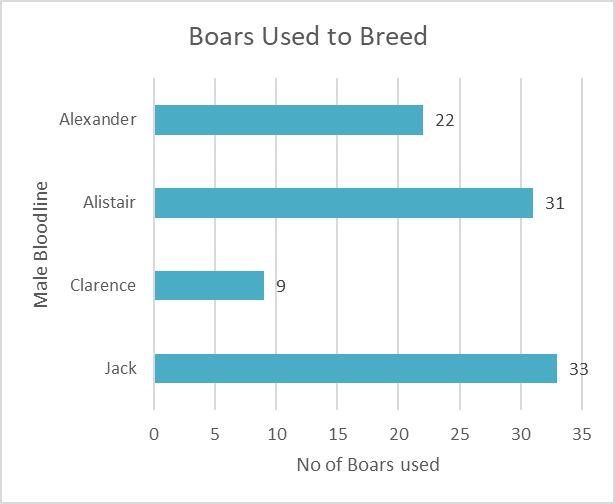
This table summarises piglet production across different regions, detailing the number of gilts born, boars born, total pigs born, and the percentage of piglets relative to the overall total.

After reviewing the data for 2024 thus far, we can note the following key data points;
● Popular Sow Lines: Cynthia, Gertrude, Clare, and Lady.
● Popular Boar Lines: Jack,Alistair,Alexander, and Clarence.
● Highlights
● The Central region had the highest total number of pigs born over the given months.
● February and March were the months with the highest numbers of pig births.
● South West and Central regions consistently had high birth numbers across all months.
If you breed OSB Pigs, we would love to hear from you. Please email us at hello@oxfordsandyblackpiggroup.com and let us know the following;
● Sire and Dam Bloodlines
● Date of Birth
● Number of Gilts & Boars farrowed
● Your location
Your support allows us to continue with such projects and data collaboration and we are thankful for all your help.
The FREE application from the Oxford Sandy and Black Pig Foundation Charity #1190469 (England & Wales) SC052662 (Scotland) .

Our app gives you access to all our key info and tools whilst you're on the move.Tools such as:
- Pig WeightTool
- Farrowing DateTool
- Standstill Calculator
- Feed Calculator
-Abattoir Checklist
-Access to our Breeders Map
- GSAProgram
- and loads more








Mike and Jayne Carter, long time supporters of the OSBPG Charity, are happy to lend a hand for those seeking transportation services for the movement of pigs.
● Mike and Jayne have a 750kg trailer and are both qualified competent attendants and have breakdown cover for both trailer and vehicle which includes recovering of trailers including livestock.
● In addition, Mike is also a HGV driver (retired from theArmy and use to driving heavy vehicles) and travels extensively up and down the country.
The logistics would be as follows:
● movement starts from Mike and Jayne (Wigan) to point of collection to point of delivery and return back to Wigan.
Trailer details is as follows:
● Small trailer max 750kg = 1 large pig male/female, or two 6 month old pigs, or 6/8 weaners. This trailer can be partitioned into 2 sections to carry one of either sex of medium size pig and weaners.
● Small trailer cost would be 80p per mile + VATbilled to purchaser.And if you qualify for the GSAyou may also use it in connection with the movement.
Requirements
● It would be advantageous to have an idea of weight of each animal being transported in the event of multiple pigs being moved..
● Loading and unloading would be the responsibility of the vendor/purchaser. In addition to the above we have copies of Mike and Jayne hauliers licence and their driver/attendants certificates for movement of livestock Category 1 up to 8 hrs.
If you would like to find out more or book Mike and Jayne, please visit our website here


To each and every one of us, the daily routine can seem all too familiar: waking up, tending to the children, tending to the livestock, and then finding a moment alone with our thoughts, perhaps shedding a few tears. We put on a brave face, telling ourselves and others that we're okay, but beneath the surface, the weight of responsibilities—feed bills, living costs, school costs — can feel overwhelming.
The pressure can become relentless, a never-ending cycle that pulls us into a negative spiral. We convince ourselves that we can't burden others with our worries, that we must soldier on alone. But it's true what they say: 'It is good to talk,' and 'a problem shared is a problem halved.'
You're not a nuisance for reaching out; you're courageous. Whether it's a simple chat in the barn or a text with just the word 'hello,' know that help is within reach. When the OSBPG don't see some of you around for a while, they will contact you — not out of nosiness, but out of genuine concern.
Remember, the OSBPG Charity is here for you.Though we may be small, our hearts are big, and we are ready to listen and support you.And if we can't provide the help you need directly, we will find someone who can.
We all know someone or we may be that someone
If you are unsure where to turn, here are some helplines that offer assistance:
● Addington Fund
● FCN Charity
● Rabi Charity
● RSABI
● Yellow Wellies
You can also contact us at hello@oxfordsandyblackpiggroup.org
Additionally, the Farming Help helpline, operated by the FCN Charity, is available at 03000 111 999.
Let's break the silence together and support one another through these challenging times.





The OSBPG Foundation Charity is always thinking of ways to help our independent pork producers.
Our pork is first and foremost as it is representative of our breed, its flavour, its texture, its colour and its versatility. The OSBPG Charity recognise the hard work and dedication from our independent producers, breeders and keepers of the Oxford Sandy and Black pig. Furthermore, we see the value in what you do, and as such Kathryn Green-Smith has designed the OSBPG Charity Pork labels. The labels are free, personalised and are in recognition of the value that you show in producing OSB Rare Breed pork.
Just like Mr. & Mrs. Edmond of Poppyfields Fine Produce, you can also own your free 150 OSB Pork Labels here .



by
Paddy (13), Isaac (11), Zach (10), Pippy (9), Aaron (9) and Mikey
The Mayo Family run a farm in Somerset, where their enthusiasm for the outdoors and caring for animals truly reflects the joy and significance of farm life.Their dedication to agriculture and farming is evident. Here are the Mayo children's perspectives on why they love life on the farm:
Farming is people who own or rent land to raise animals or crops. Farming is important for our food and our countryside. Without farming we would have to import all the meat, dairy, eggs and vegetables, the prices would be so high because of this. Everyone needs to eat 3 times a day and farming provides that food, grown and raised here in our country. We think that farming is important for this reason, but it is also important to us because it is something that we love. We enjoy looking after the animals here and making sure that they are happy, healthy, and well looked after.The pigs love a cuddle, and we enjoy watching them play and grow. We understand that these are where our meat comes from and, although we are sad when someone goes to “freezer camp” we understand that it is an important and necessary part of farming. To quote Mikey “We look after the animals, and we eat them”

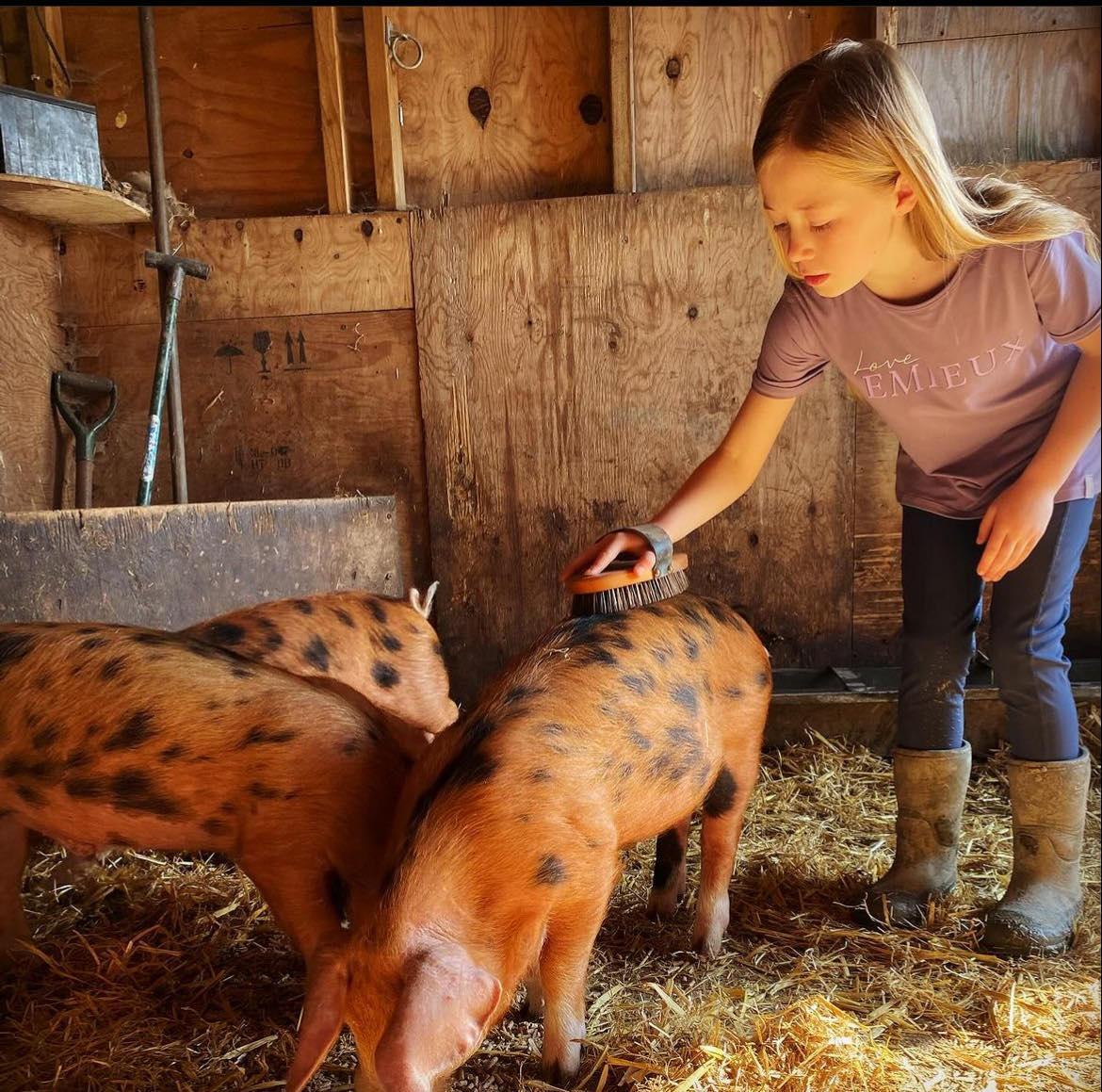
The work to keep the animals healthy and well fed and happy is hard and has to be done even when it is raining or cold or horrible out.The pigs need food and water twice a day, so do the chickens and the geese and the sheep need checking twice a day. Our dad goes and does this every morning and every evening. In the evening mum makes our dinner while he does it and we are always happy if it is burgers or sausages from our own pigs.

Pippy said that she loves to help with feeding the animals and going to buy the food for them. Zach said that he enjoys helping his dad do jobs around the farm. Paddy is the proud owner of his own Shetland sheep, Galaxy, that produced a lovely set of twins for him this year. Isaac andAaron were lucky enough to be in the field with their mum to see the first Shetland sheep born on our farm and Mikey is always keen for helping, especially if he gets to ride on the quad and he loves the sausages too.

Thank you for reading our story and we hope you enjoyed it. Our parents Clare and Jason Mayo are always happy to speak to you about what we do and of course about our fabulous Oxford Sandy and Black Pigs.
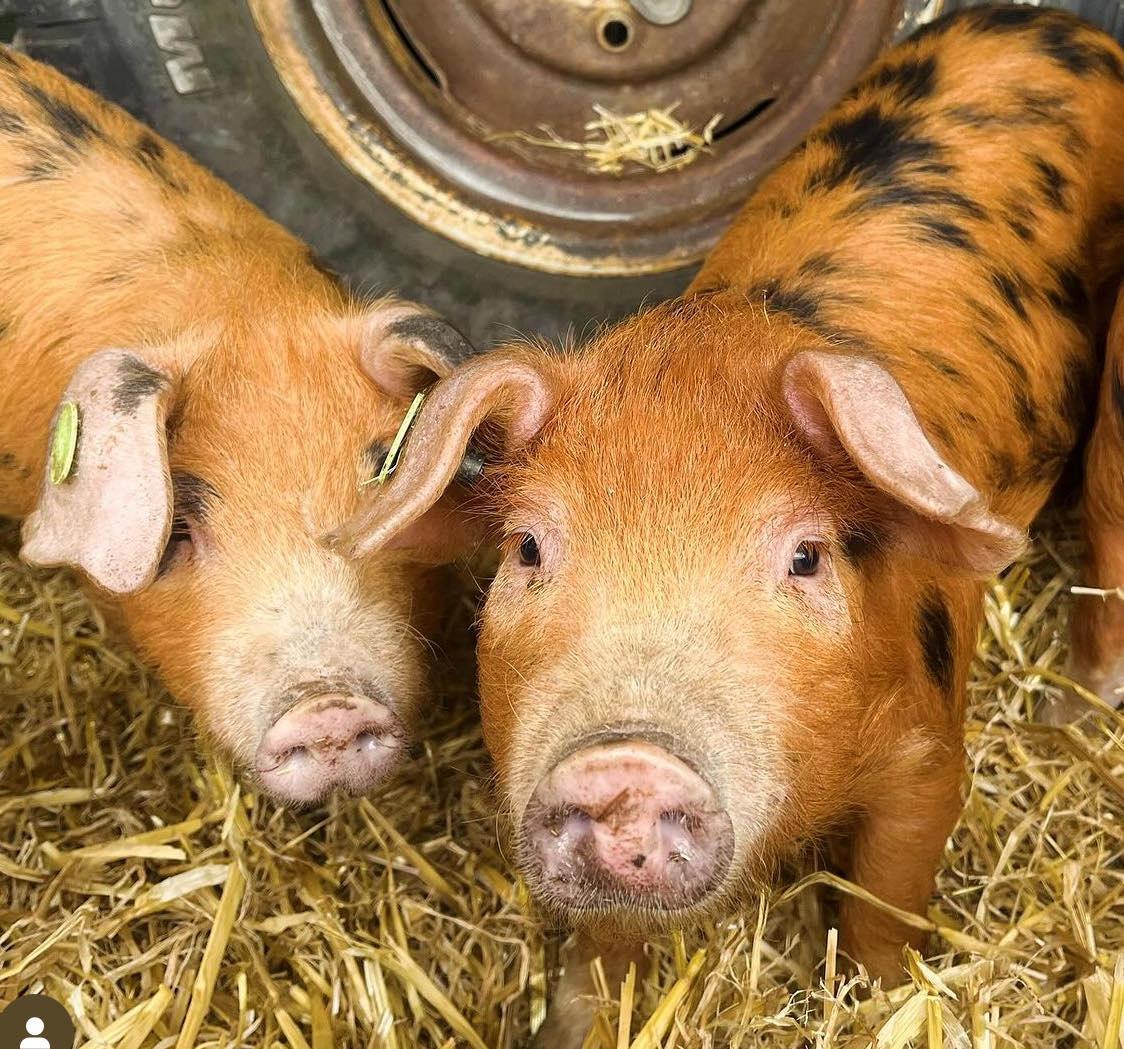

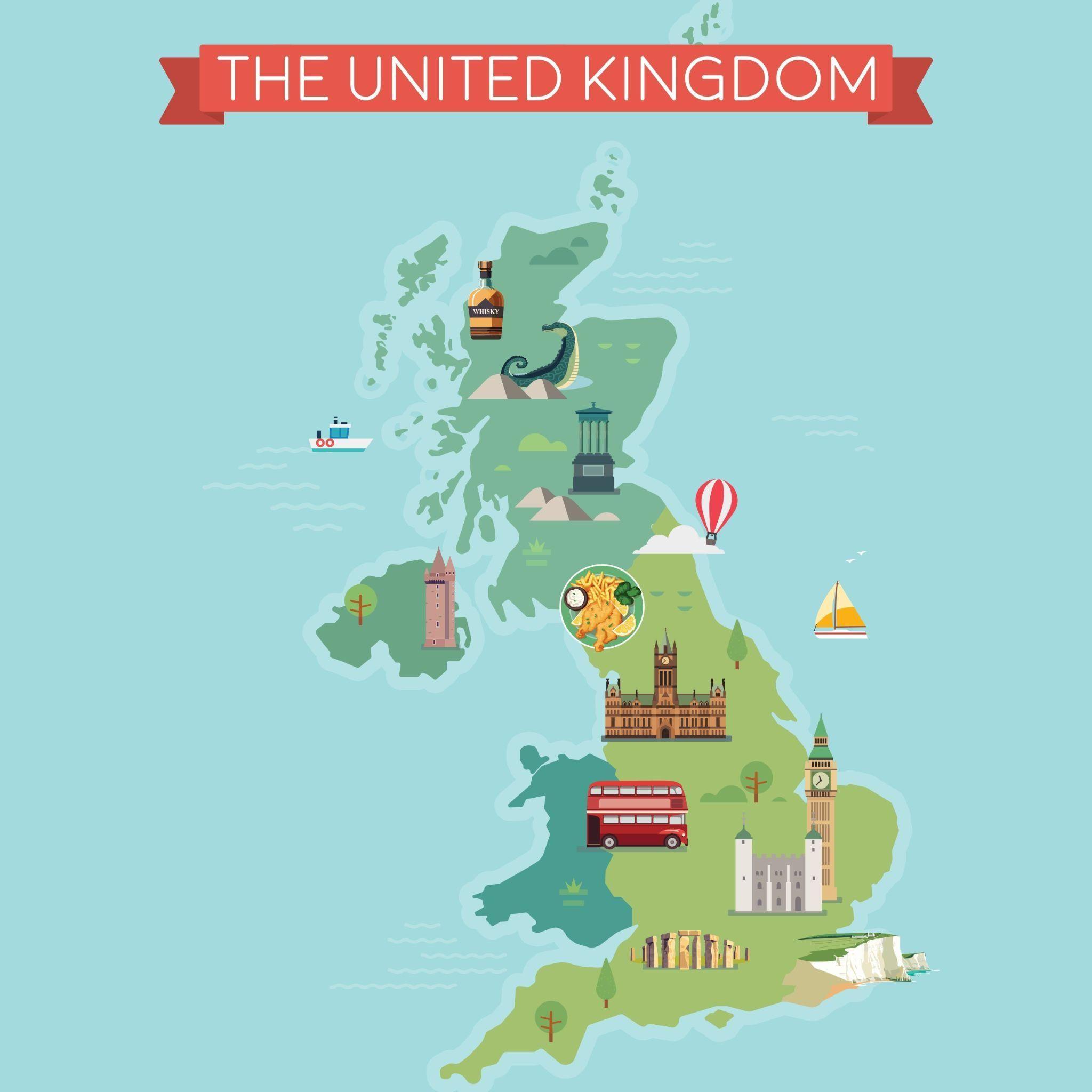


Asummary of GSAapplication supported by the charity since the program started in 2021..The data includes the number of applications received, charity payouts, the number of pigs moved, pig miles travelled, and the total distance travelled. Additionally, the report breaks down the number of pigs moved by individual Bloodlines.
Oxford Sandy and Black Pig Foundation Charity
Genetic SpreadAllowance Program (As of 30/06/2024)
36 GSAapplications have been supported by the charity to date.This figure represents the commitment of the OSBPG Foundation Charity to conserving and diversify the OSB Breed with our supporters.Atotal of £6,600 has been paid out by the charity to our supporters inline with the GSAcriteria
Within these application the Charity has provided support for the movement of 54 pigs all across the UK from Cornwall to the highlands of scotland.


On average pigs with in the GSAprogram have travelled 228 miles
OnAverage our supporters have travelled 456 miles

The following data shows the charity has supported the moves of all 17 OSB bloodlines with focus on the more vulnerable lines such as the Elsie andAlexander. This conservation is key to the objectives of the OSBPG Foundation Charity and could not be achieved without all of our wonderful supporters and fundraisers -THANKYOU


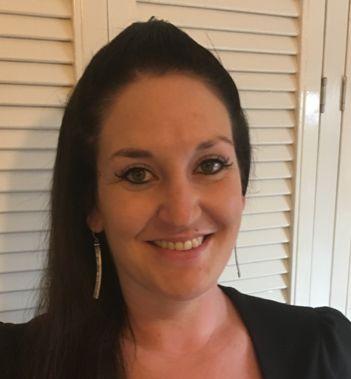
Louise Blenkhorn, BSc(Hons), BVM&S, MRCVS, is an independent pig veterinary consultant and a pig farmers daughter. Louise's private life is just as busy. Amother of two to Emma andAva. Louise and her husband Neil, run a successful herd of Limousin beef cattle.
There seems to be lots of new arrivals recently so I thought I would send a quick reminder about preparing for farrowing.
● Prepare farrowing area and move sow in 2 weeks before farrowing so she has time to settle.
● Move sow onto a lactator ration ~2.8 – 3.0kg/day.
● Use chopped barley or wheat straw in the farrowing area to avoid piglets getting tangled.
● Prepare a warm creep area for the piglets using a heat mat or heat lamp.
● Lower sow feed intake to 2kg/day for 3 days before farrowing – this will help to prevent MMA(mastitis, metritis, agalactiae (no milk)) and reduce gut fill to minimise any obstruction during the birthing process.
Know the normals! So you will know when to intervene
● Average time between piglets = Gilts 12min; Sows 18-20min.
*Please note that the interval will speed up as farrowing progresses due to oxytocin release as the piglets suckle*


There are two primary reasons for a sow to fail to deliver piglets:
1. Inertia - a failure of the uterus to contract most often occurring part way through farrowing and is more likely to occur in older sows or sows/gilts in extreme body condition (either too fat or too thin). Intervention is required to avoid subsequent stillbirths.
2. Obstruction.This can result from oversized piglets (particularly in gilts), malpresentation (eg, sideways), dual presentation (two attempting to exit simultaneously) and foetal abnormalities.
When to intervene
● Interval between piglets is >45min.
● Sow is pushing with no piglet born imminently.
● Sow is showing signs of distress.
● Meconium (brown poo pellets) seen at the vulva – indicating piglet distress.
70% of stillbirths occur in the last 25% of piglets born so it is important that farrowing progresses in a timely manner.
If you have to intervene, ensure a well lubed gloved hand is used. Hygiene is important. Repeated intervention would justify the use of a long acting antibiotic. Oxytocin can be used under the direction of your vet.
Please consult your vet if you are unsure or need assistance.


With Kathryn Green

Ingredients
● 1.5Kg Rindless Pork Belly
● 3-4 Garlic Cloves
● FreshThyme
● 6 Bay Leaves
● 500g rendered pork fat
● 200ml water
● Salt
● Black Pepper

To find out how to make this wonderful dish, tune in to our cook-a-long with step by step instructions. Click here

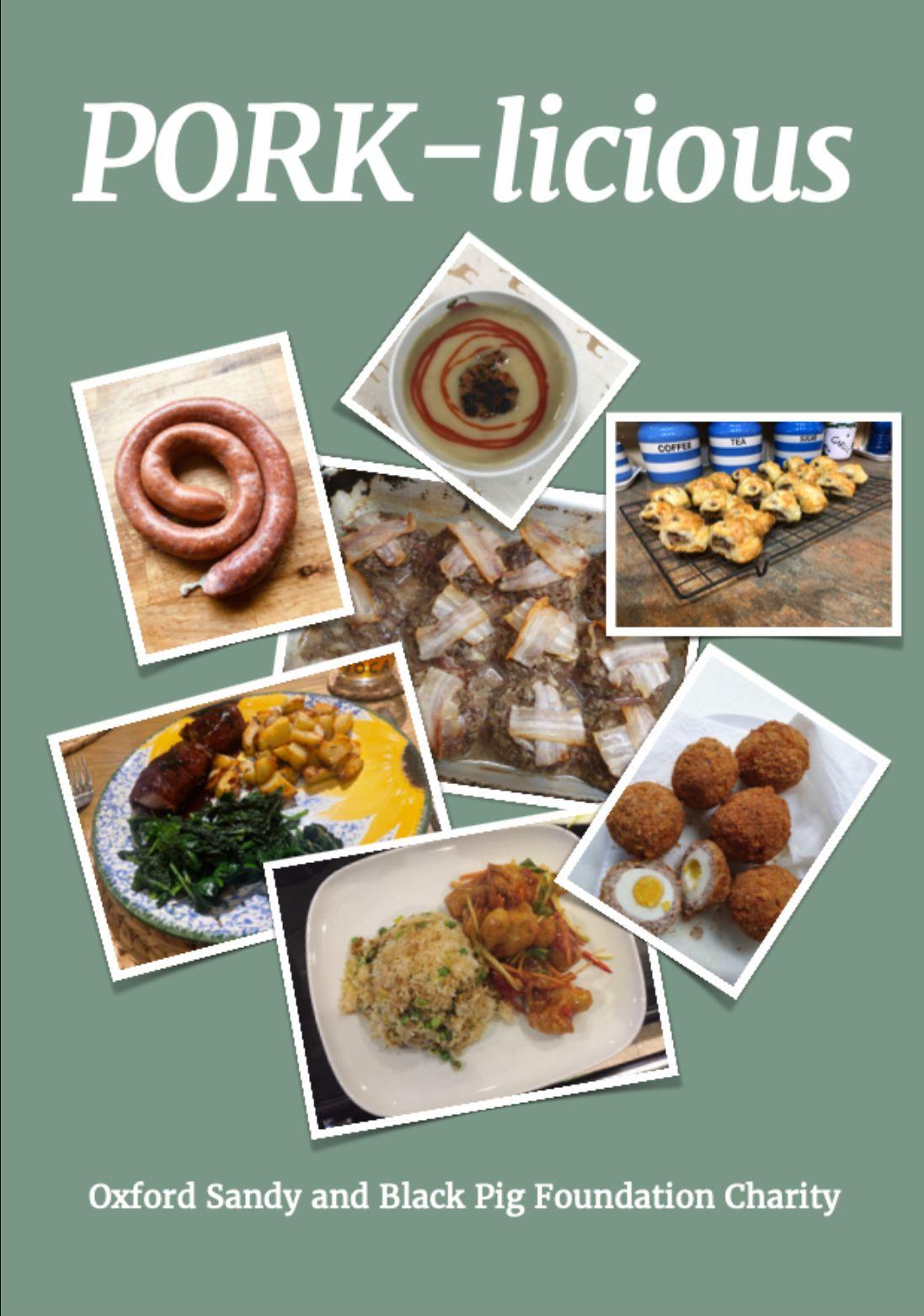

If you’re looking for weaners, wonderful OSB Pork, breeding stock, or boars to hire, then look no further than our Interactive “Breeders and Producers Map” We have over 100 breeders and producers located all over the United Kingdom and Ireland. So if your looking pop on over to our website and see who is near you.

If you’re an OSB Pork Producer or Breeder yourself, then why not get yourself listed for “FREE” on our map. Our website has over 3,000 visitors every month, with hundreds looking for OSB Pork, Breeding Stock and Weaners.
Click here to add yourself to our map for “FREE”

















